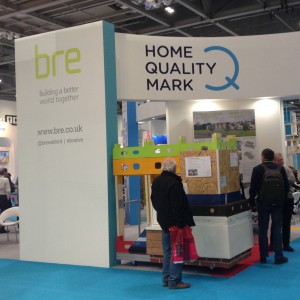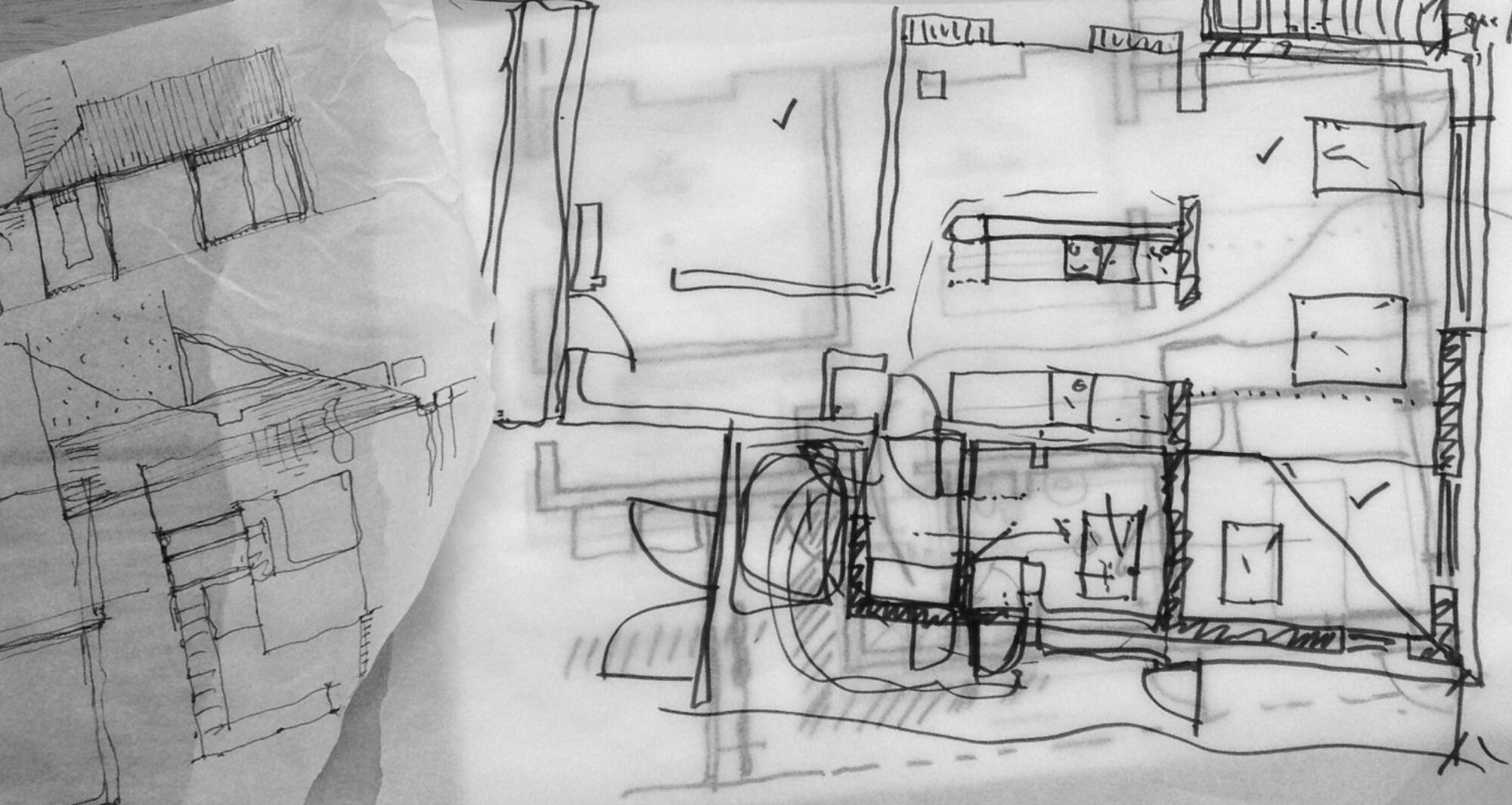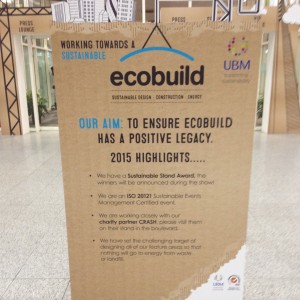This week was Ecobuild – the big show of the year for sustainable design and construction!
Especially as I’m not now working in practice, it’s easy to fall behind with what’s current (ideas, technologies, standards, incentive schemes etc), so I took a wee trip down to East London on the final day of the show. I’ve been a few times in the past but it gets bigger every year and it’s amazing how much things change (and also how much doesn’t change! – I had a lovely chat with a lady I’d met about 5 years ago doing a demo of an energy software who was doing a demo of a new generation of the same energy software!)!
One of the things I was keen to find out more about was the new Home Quality Mark which I knew was being launched at the show by the BRE (Building Research Establisment). The HQM will be a voluntary standard giving new homes a star rating for quality, based on a selection of criteria under 3 headings: Surroundings, Energy and Health/Wellbeing. The detailed criteria have yet to be finalized, but it looks like the HQM will be useful in helping buyers make an informed choice, and it will (hopefully!) also demonstrate to developers what is important to buyers.
 I dipped in and out of a few of the talks that were going on around the halls and picked up some interesting information on various different topics. On the whole it was a really good show and, from an energy and environmental standpoint, there were lots of exciting and innovative products and ideas on show. However, I was disappointed there wasn’t really any reference to accessibility or inclusive design anywhere (other than the Home Quality Mark’s health and wellbeing criteria).
I dipped in and out of a few of the talks that were going on around the halls and picked up some interesting information on various different topics. On the whole it was a really good show and, from an energy and environmental standpoint, there were lots of exciting and innovative products and ideas on show. However, I was disappointed there wasn’t really any reference to accessibility or inclusive design anywhere (other than the Home Quality Mark’s health and wellbeing criteria).
I really believe that inclusive design is an essential aspect of sustainability.
To be truly sustainable, a project (no matter how big or small) must work in social and financial terms as well as environmental. It’s no good building the most energy efficient project in the world if it costs a small fortune and/or is not a pleasant place to live or work – it just doesn’t work! And what can be more fundamental than being accessible to as many people as possible!
Whether you are designing for full wheelchair accessibility from the start, or thinking through future accessibility needs and designing for flexibility, I believe that it should be a standard aspect of eco design – after all if something is difficult to adapt in the future it’s a waste of both money and resources.
Inclusive design is design for everyone, not just for wheelchair users. If you are young, fit and able bodied it’s easy not to think about how our buildings and environment can put up barriers for some, but break your leg, loose your sight, try pushing a pram around and suddenly things will seem very different. I’ve always been an advocate of inclusive design but, since becoming a parent of a disabled child, I definitely have a new perspective on just how much could be done to improve inclusion – from babies in prams through to frail elderly and everyone in between!
I’d love to see:
- the ‘eco’ community consider accessibility as a key aspect of sustainability,
- builders, developers, agents & the homestyle media embrace the positivity and saleability of inclusive design
- disabled people given the same sort exciting and aspirational design advice and options as everyone else!
I’ve made myself a list of various shows to go and see over the coming months to see what’s out there (wearing both my design and building industry hat & my parent of a disabled child hat):
- Homebuilding & Renovating Show
- Kidz in the Middle
- Ideal Home Show
- Grand Designs Live
- Naidex. Independence. Together.
I’m hoping to find accessibility advice at the building shows and design advice at the disabled living shows, and if I don’t, I’d love to find a way to change that!


